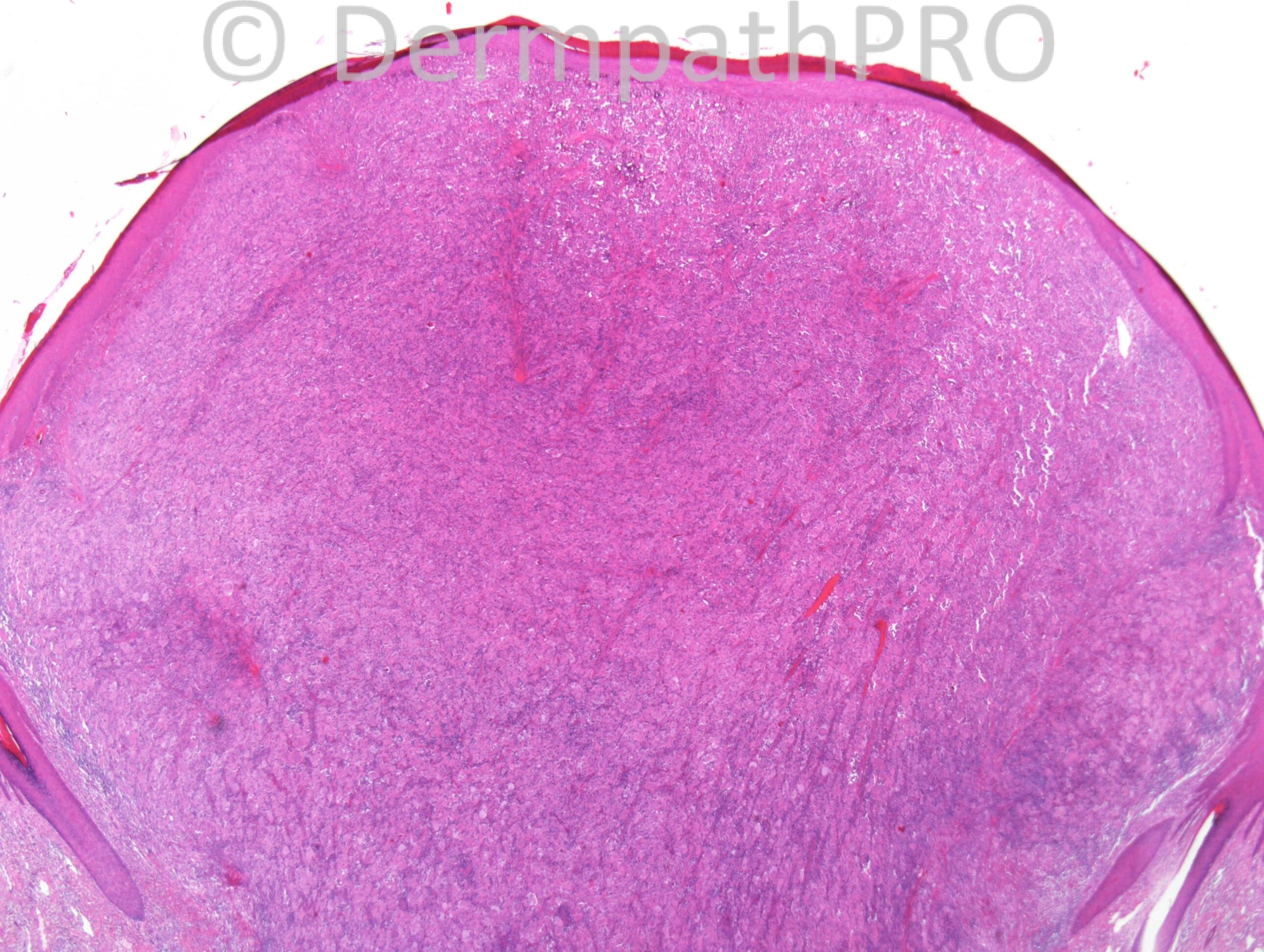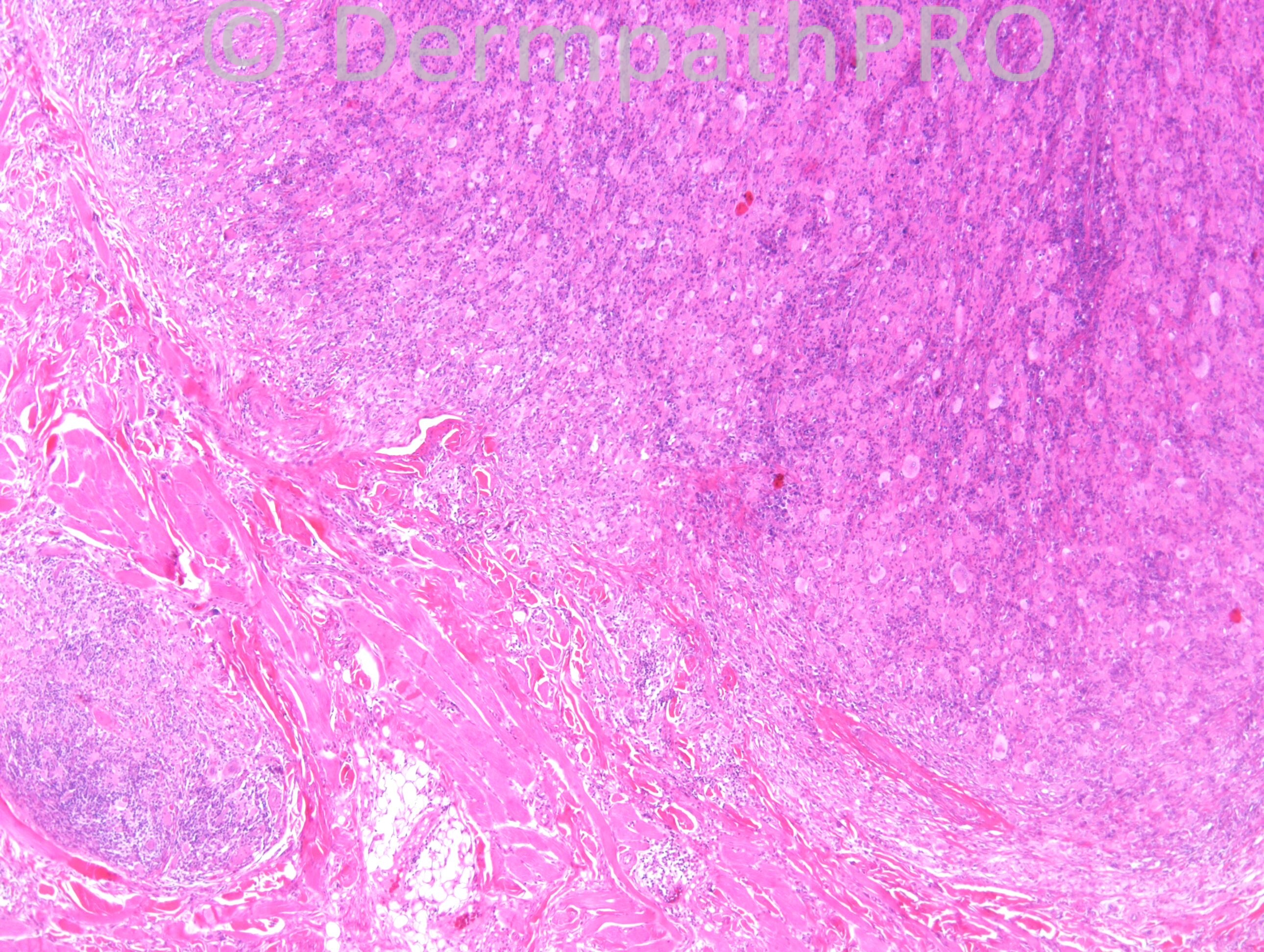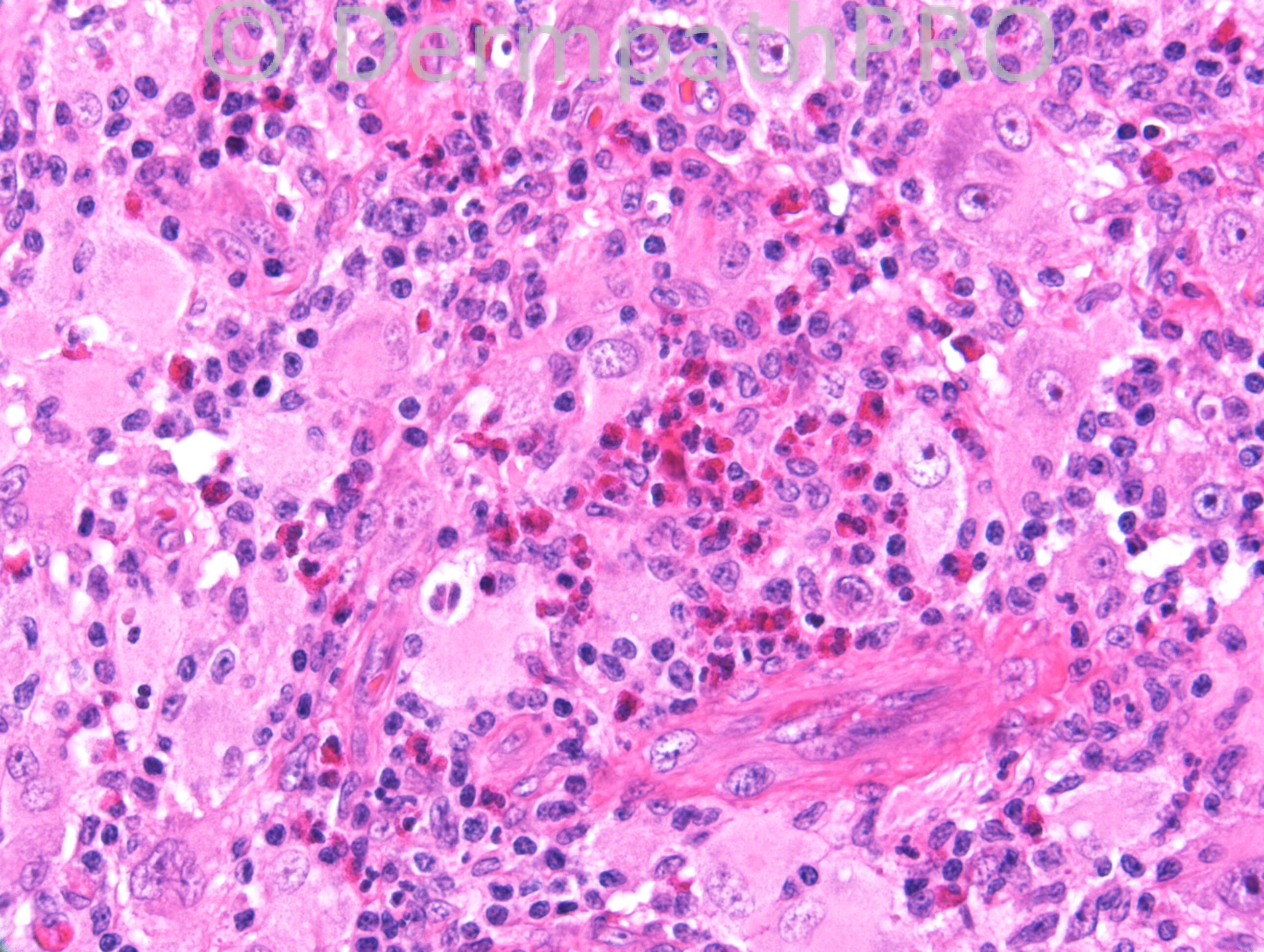Case Number : Case 880 - 1st November Posted By: Guest
Please read the clinical history and view the images by clicking on them before you proffer your diagnosis.
Submitted Date :
47 years old male. Upper chin. Grew to 1cm in 5 weeks. Surgeon queries epithelialized granuloma or KA.
Case posted by Dr. Richard Carr.
Case posted by Dr. Richard Carr.







Join the conversation
You can post now and register later. If you have an account, sign in now to post with your account.